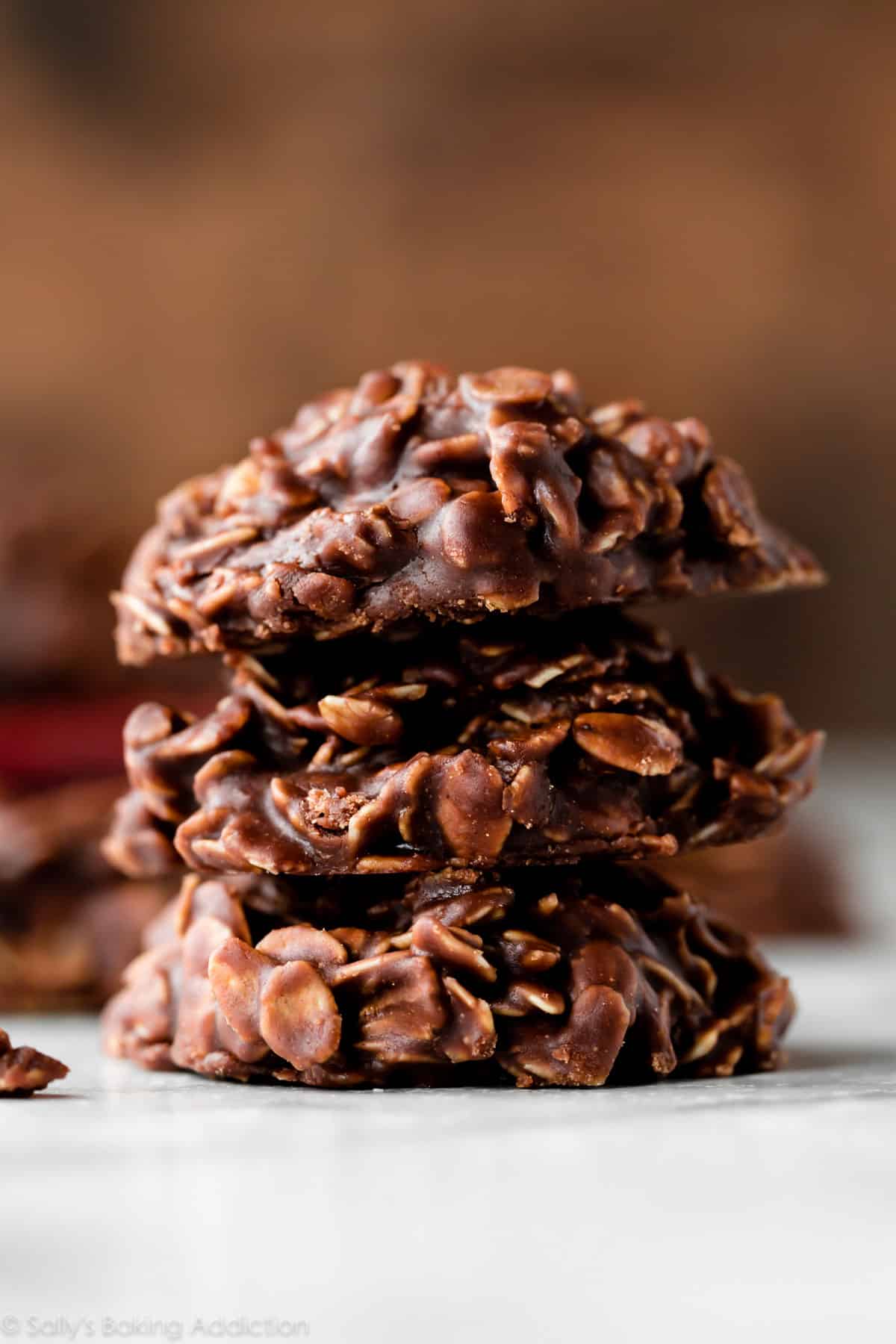Welcome to our ultimate guide on crafting perfect no-bake chocolate oatmeal cookies! If you’re seeking a quick, effortless treat that combines the rich decadence of chocolate with the hearty texture of oats, look no further. These cookies, often called “preacher cookies” or “haystacks,” are a beloved staple for busy bakers, requiring no oven time and just a few pantry staples. Ideal for hot summer days, last-minute gatherings, or satisfying sweet cravings without the fuss, they deliver chewy, fudgy goodness in under 30 minutes.
In this SEO-optimized article, we’ll unlock 7 key secrets to mastering these cookies, from their intriguing history to ingredient breakdowns, a step-by-step recipe, creative variations, expert tips, storage advice, nutritional insights, and FAQs. Chocolate Oatmeal Cookies We’ll weave in internal links to complementary recipes on our site, such as our classic chocolate chip cookies or peanut butter cookies, and external links to trusted sources for deeper dives. Whether you’re a novice in the kitchen or a seasoned pro, this guide will empower you to create irresistible cookies that evoke nostalgia and delight everyone.
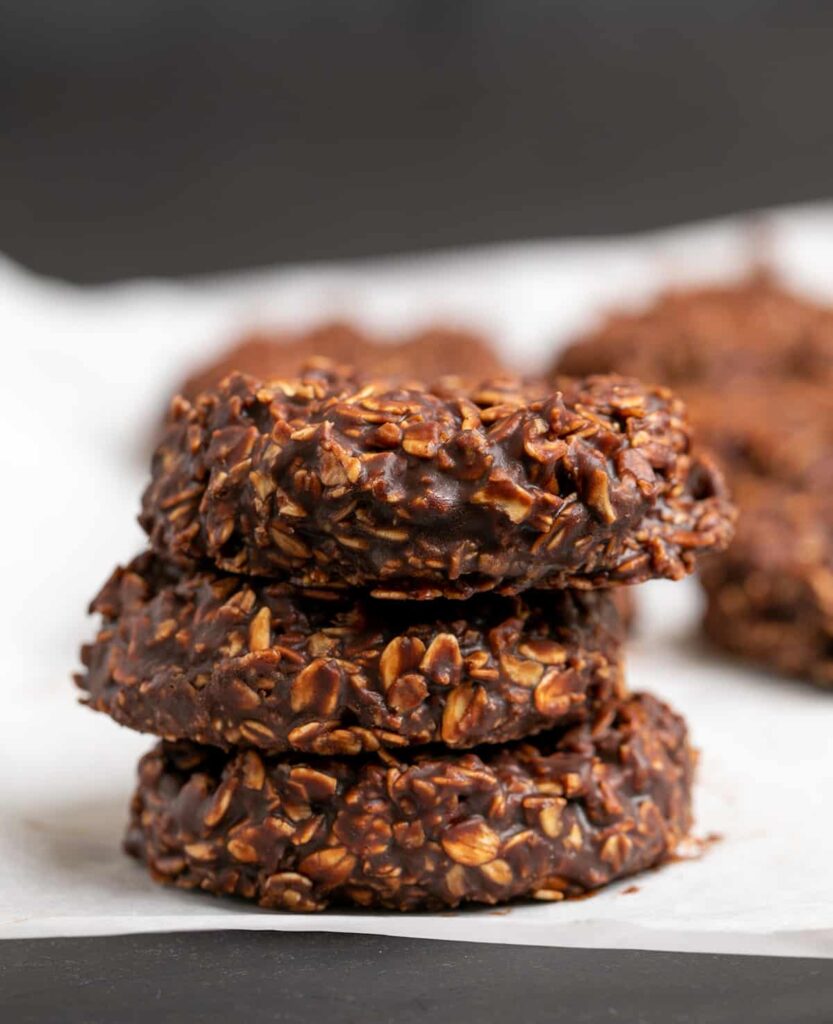
No-bake chocolate oatmeal cookies are more than a dessert—they’re a testament to resourceful baking, perfect for kids’ involvement or quick snacks. Chocolate Oatmeal Cookies Let’s explore the secrets that make them a timeless favorite and get you stirring up a batch today!
Secret 1: The Fascinating History of No-Bake Chocolate Oatmeal Cookies
The story of no-bake chocolate oatmeal cookies is a delightful blend of necessity, innovation, and cultural charm, tracing back to early 20th-century America. These treats emerged during the Great Depression in the 1930s, when resourceful homemakers sought economical ways to create sweets without wasting fuel on ovens. Chocolate Oatmeal Cookies Recipes from that era often used simple bindings like butter, sugar, or honey to hold ingredients together, reflecting the scarcity of resources. By the 1940s and 1950s, as peanut butter and cocoa became more accessible post-World War II, the cookie evolved into its modern form, popularized in cookbooks like those from Betty Crocker.
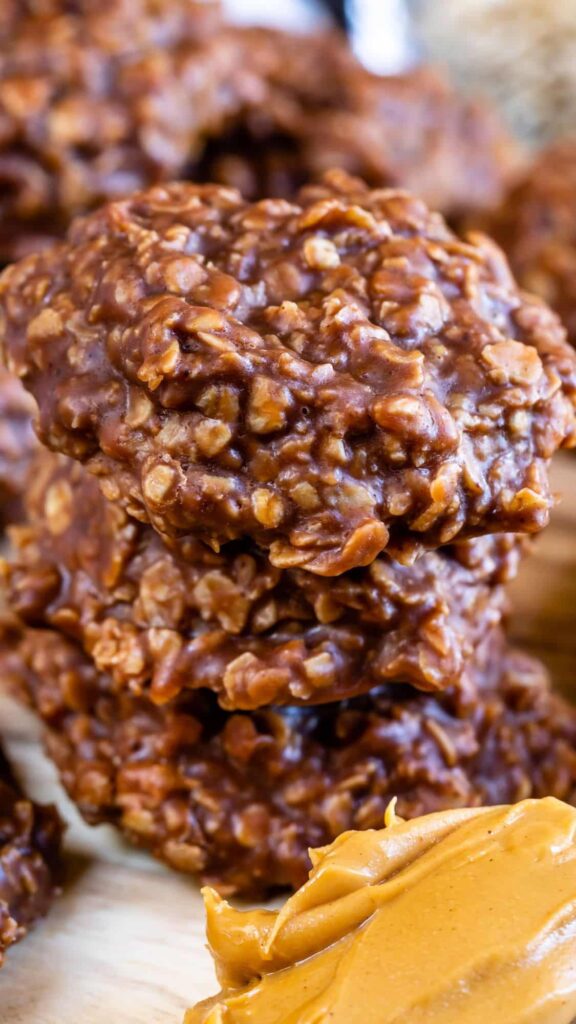
One of the most endearing origin tales revolves around their nickname, “preacher cookies.” Legend has it that Appalachian homemakers would spot the local preacher riding up the mountain on horseback and quickly whip up these no-bake treats to offer hospitality without delay. Chocolate Oatmeal Cookies The speedy preparation—boiling a mixture and dropping spoonful’s to set—allowed for impromptu entertaining, earning them monikers like “preacher’s delight” or “AWOL cookies” during wartime for their morale-boosting simplicity. In the Northwest, they’re simply “no-bakes,” while elsewhere they’re known as “haystacks” for their rustic, piled appearance, or “podgiest,” “fudgiest,” and “boiled cookies.”
The 1970s saw a surge in popularity, possibly tied to test kitchens from oatmeal, cocoa, or peanut butter companies promoting easy recipes amid a no-bake trend. Chocolate Oatmeal Cookies This era’s focus on convenience mirrored the cookie’s appeal, with variations incorporating peanut butter becoming standard. Today, they’re a nostalgic favorite, adapted for modern diets like gluten-free or vegan, and featured in blogs and social media for their kid-friendly ease.
For more on Depression-era desserts, explore our history of American baking. Externally, Allergies dives into the preacher cookie lore. This history underscores their enduring charm: born from thrift, they’ve become a symbol of quick comfort in kitchens worldwide.
Secret 2: Essential Ingredients for No-Bake Chocolate Oatmeal Cookies
The allure of no-bake chocolate oatmeal cookies lies in their simplicity, relying on just a few staple ingredients that come together for a fudgy, satisfying treat. Let’s break down the essentials, their roles, and selection tips to ensure your cookies set perfectly every time.
- Sugar: Granulated white sugar is the base, providing sweetness and helping the mixture bind as it boils. Some recipes mix in brown sugar for a caramel-like depth and extra chewiness. Use 1 1/2 to 2 cups, depending on desired sweetness.
- Butter or Margarine: This fat adds richness and helps create the fudgy texture. Unsalted butter (1/2 cup) is standard, but margarine works for dairy-free versions. It melts into the boil, emulsifying the ingredients.
- Milk: Whole milk (1/2 cup) contributes creaminess and aids in dissolving the cocoa and sugar. Alternatives like almond or oat milk suit vegan adaptations, though they may alter setting time slightly.
- Cocoa Powder: Unsweetened cocoa (3-4 tablespoons) delivers the chocolate punch. Dutch-processed cocoa offers a smoother flavor, while natural provides intensity. Ensure it’s fresh for the best taste.
- Oats: Quick-cooking oats (3 cups) are crucial for the chewy structure, absorbing the liquid without becoming mushy. Old-fashioned oats work but result in a heartier texture; avoid instant oats, which can turn soggy.
- Peanut Butter: Creamy peanut butter (1/2 cup) adds nutty flavor and helps the cookies set firm. Chunky versions provide texture; for nut-free, swap with sunflower seed butter.
- Vanilla Extract: A teaspoon enhances overall flavor, bringing out the chocolate notes. Pure vanilla is ideal.
- Salt: A pinch balances sweetness and amplifies flavors.
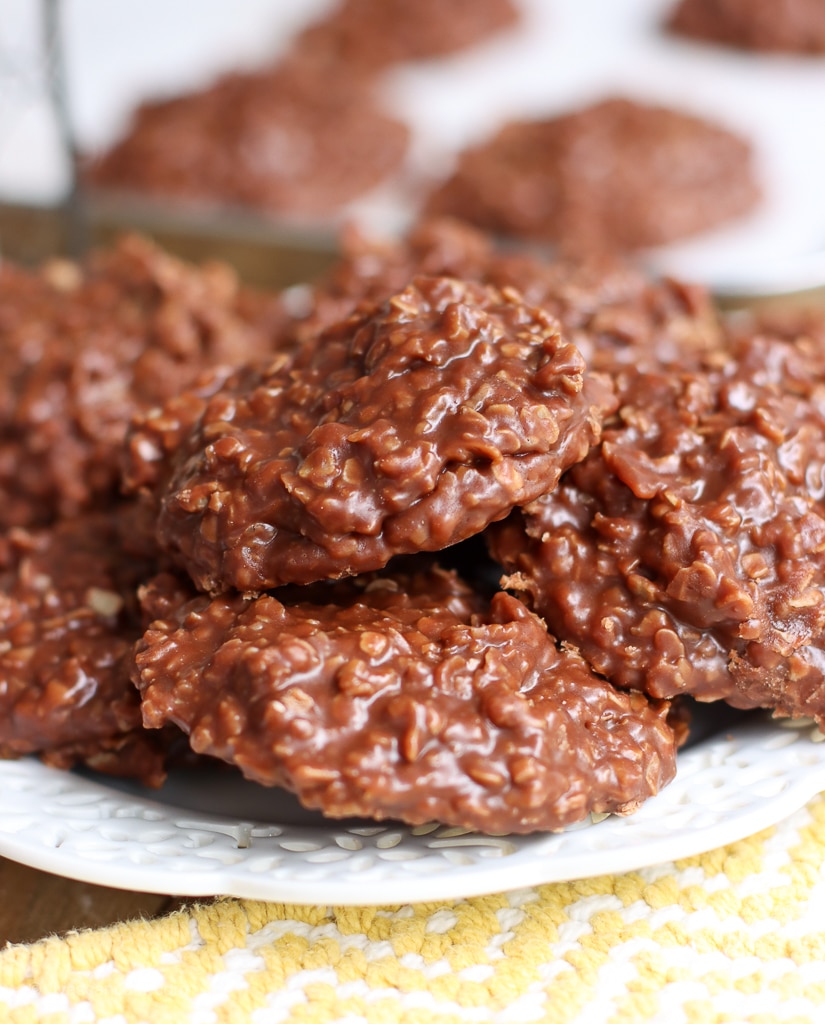
A classic recipe might include: 2 cups sugar, 1/2 cup butter, 1/2 cup milk, 3 tbsp cocoa, pinch salt, 1/2 cup peanut butter, 1 tsp vanilla, 3 cups quick oats. For healthier twists, some use maple syrup or coconut oil.
Quality matters—opt for natural peanut butter without added sugars for authenticity. For sourcing tips, visit King Arthur Baking. These ingredients ensure a quick, foolproof batch; Chocolate Oatmeal Cookies tweak ratios for personal preferences, like less sugar for a less sweet version.
Secret 3: Step-by-Step Recipe for Classic No-Bake Chocolate Oatmeal Cookies
Dive into the hands-on fun with this easy no-bake chocolate oatmeal cookie recipe. It’s stovetop-simple, ready in minutes, and yields chewy, chocolate-packed treats. Inspired by timeless versions, this method ensures success without baking.
Prep Time: 10 minutes | Set Time: 20-30 minutes | Total Time: 40 minutes | Yield: 24-36 cookies
Ingredients:
- 2 cups granulated sugar
- 1/2 cup unsalted butter
- 1/2 cup milk
- 3 tablespoons unsweetened cocoa powder
- Pinch of salt
- 1/2 cup creamy peanut butter
- 1 teaspoon vanilla extract
- 3 cups quick-cooking oats
Instructions:
- Prep Your Space: Line baking sheets or countertops with parchment paper or wax paper for easy cleanup and non-stick setting.
- Boil the Base: In a medium saucepan over medium heat, combine sugar, butter, milk, cocoa, and salt. Stir until the butter melts, then bring to a rolling boil. Boil for 1-2 minutes without stirring—timing is key for proper setting.
- Add Flavor Boosters: Remove from heat. Stir in peanut butter and vanilla until smooth and fully incorporated. The mixture should be glossy.
- Incorporate Oats: Quickly add the oats, stirring until evenly coated. Work fast as the mixture thickens.
- Shape the Cookies: Drop spoonful’s (about 2 tablespoons each) onto the prepared surface. Use a spoon to shape into rounds or haystacks if desired.
- Cool and Set: Let cookies cool at room temperature for 20-30 minutes until firm. For faster setting, refrigerate for 10-15 minutes.
- Enjoy: Once set, peel off the paper and serve. Store as needed.
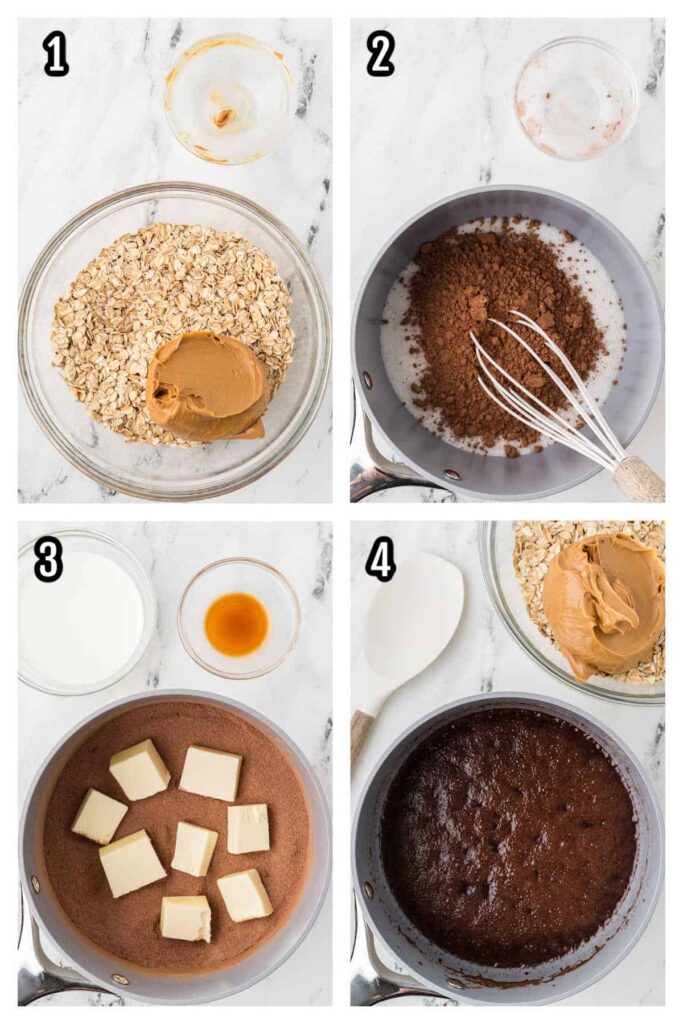
For a video guide, check this tutorial on foolproof no-bakes. Chocolate Oatmeal Cookies Common pitfalls include over-boiling (dry cookies) or under-boiling (soft ones)—aim for that 1-minute sweet spot.
This recipe is versatile; for a peanut-free version, see variations below. Pair with our oatmeal raisin cookies for a baked contrast.
Secret 4: Delicious Variations to Try
Keep your no-bake chocolate oatmeal cookies exciting with these adaptations, catering to tastes and dietary needs while preserving ease.
- Peanut-Free Version: Swap peanut butter for sunflower seed butter or omit it, using extra cocoa for richness. Ideal for allergies.
- Almond Joy Twist: Add shredded coconut (1/2 cup) and chopped almonds for a candy bar vibe.
- Vegan Delight: Use coconut oil instead of butter, plant-based milk, and maple syrup in place of sugar. Agave works too for lower glycemic.
- Crunchy Nutty: Mix in chopped pecans or walnuts (1/2 cup) for texture, or use chunky peanut butter.
- Double Chocolate: Stir in chocolate chips after the boil for melty pockets.
- Healthy Swap: Replace sugar with honey or dates, and use gluten-free oats for a nutritious snack.
- Flavor Infusions: Add espresso powder for mocha, or cinnamon for warmth.
For more ideas, explore Bigger Bolder Baking’s endless variations. These keep the no-bake essence while adding flair—try with our vegan cookie recipes.
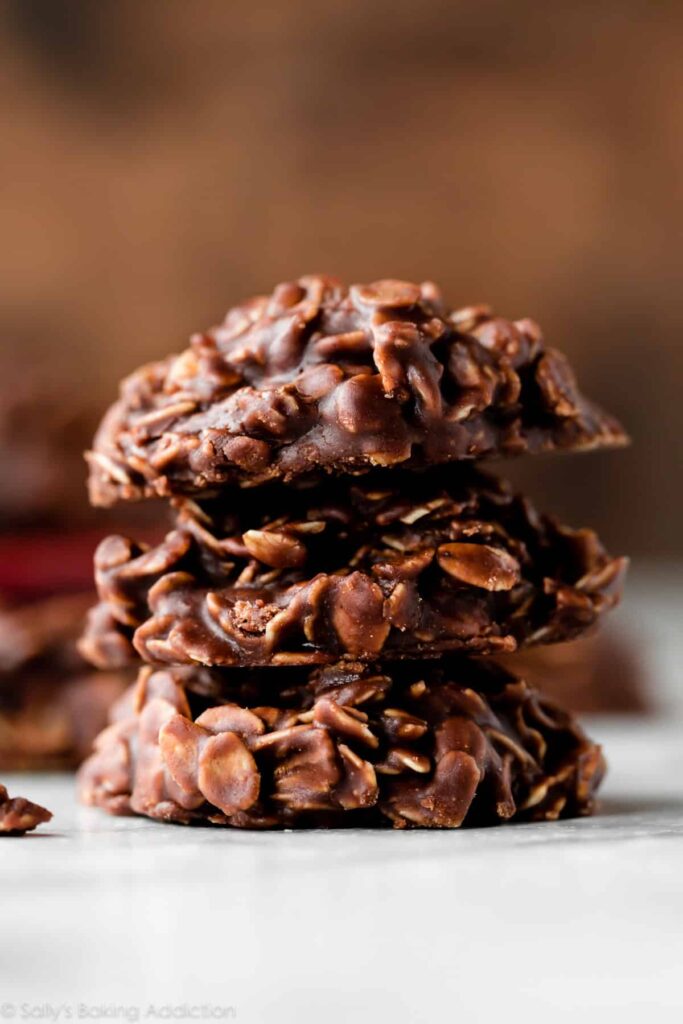
Secret 5: Pro Tips for Flawless No-Bake Cookies
Achieve perfection with these insider tips:
- Boil Precisely: A full rolling boil for exactly 1 minute ensures setting; use a timer.
- Oat Choice: Quick oats absorb best; old-fashioned need longer boiling for chewiness.
- Weather Watch: High humidity can prevent setting—add extra oats if needed.
- Stir Quickly: Mix oats in off-heat to avoid hardening too fast.
- Portion Evenly: Use a cookie scoop for uniform sizes.
- Cool Properly: Room temp for fudgy; fridge for firmer.
- Fresh Ingredients: Old cocoa can dull flavor—check dates.
From experienced bakers, these prevent common issues like crumbly or gooey results.
Secret 6: Storage and Serving Suggestions
Store cooled cookies in an airtight container at room temperature for up to 5 days, or refrigerate for 1 week. Chocolate Oatmeal Cookies Freeze in layers with parchment for up to 3 months—thaw at room temp.
Serve as snacks with milk, crumble over ice cream, or gift in tins. For parties, stack with wax paper. Pair with coffee for an adult twist.
Secret 7: Nutritional Information and Healthier Options
Per cookie (based on 24 servings): Approximately 173 calories, 7g fat (3g saturated), 25g carbs (1g fiber, 18g sugar), 3g protein. Variations like nut-free reduce fat, while using honey lowers processed sugar.
For healthier twists: opt for natural sweeteners, add chia seeds for omega-3s, or use dark cocoa for antioxidants. Consult USDA for detailed breakdowns—enjoy in moderation as a treat!
